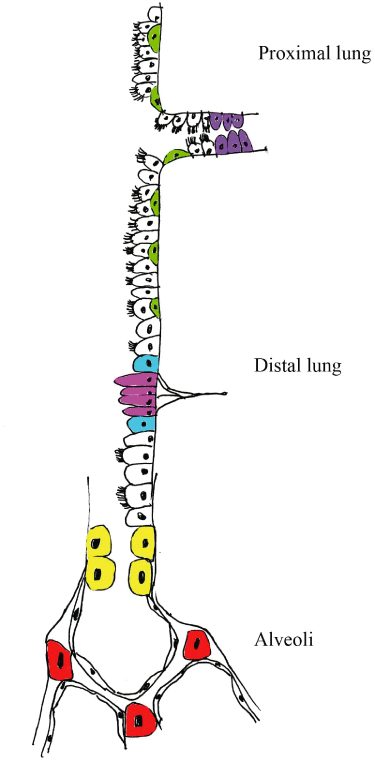Is a regenerative approach viable for the treatment of COPD?
- PMID: 21265829
- PMCID: PMC3085872
- DOI: 10.1111/j.1476-5381.2011.01246.x
Is a regenerative approach viable for the treatment of COPD?
Abstract
Degenerative lung diseases such as chronic obstructive pulmonary disease (COPD) are common with huge worldwide morbidity. Anti-inflammatory drug development strategies have proved disappointing and current treatment is aimed at symptomatic relief. Only lung transplantation with all its attendant difficulties offers hope of cure and the outlook for affected patients is bleak. Lung regeneration therapies aim to reverse the structural and functional deficits in COPD either by delivery of exogenous lung cells to replace lost tissue, delivery of exogenous stem cells to induce a local paracrine effect probably through an anti-inflammatory action or by the administration of small molecules to stimulate the endogenous regenerative ability of lung cells. In animal models of emphysema and disrupted alveolar development each of these strategies has shown some success but there are potential tumour-inducing dangers with a cellular approach. Small molecules such as all-trans retinoic acid have been successful in animal models although the mechanism is not completely understood. There are currently two Pharma-sponsored trials in progress concerning patients with COPD, one of a specific retinoic acid receptor gamma agonist and another using mesenchymal stem cells.
© 2011 The Authors. British Journal of Pharmacology © 2011 The British Pharmacological Society.
Figures

References
-
- Abe S, Boyer C, Liu X, Wen FQ, Kobayashi T, Fang Q, et al. Cells derived from the circulation contribute to the repair of lung injury. Am J Respir Crit Care Med. 2004;170:1158–1163. - PubMed
-
- Aguilar S, Nye E, Chan J, Loebinger M, Spencer-Dene B, Fisk N, et al. Murine but not human mesenchymal stem cells generate osteosarcoma-like lesions in the lung. Stem Cells. 2007;25:1586–1594. - PubMed
-
- Belloni PN, Garvin L, Mao CP, Bailey-Healy I, Leaffer D. Effects of all-trans-retinoic acid in promoting alveolar repair. Chest. 2000;117:6. - PubMed
-
- Buist AS, McBurnie MA, Vollmer WM, Gillespie S, Burney P, Mannino DM, et al. International variation in the prevalence of COPD (the BOLD Study): a population-based prevalence study. Lancet. 2007;370:741–750. - PubMed
Publication types
MeSH terms
LinkOut - more resources
Full Text Sources
Other Literature Sources
Medical

